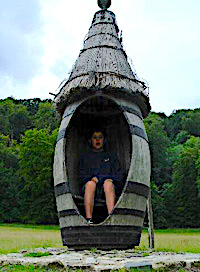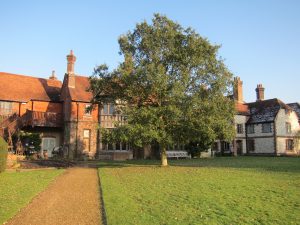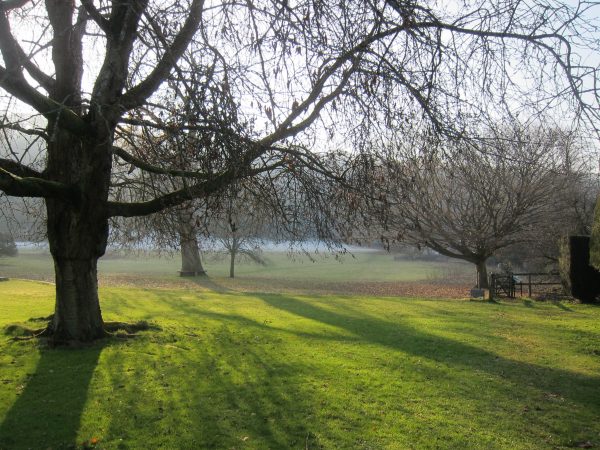Gilbert White, “Natural History of Selborne’ – the first ecologist?

Gilbert White (1720 to 1793) has often been labelled the first ever ecologist. He was a curate in Hampshire and Wiltshire and was an extraordinary observer of the natural world, keeping meticulous records of both the weather and the natural world around him. Even when he was away from home on church business he arranged for others to keep up his recordings. White didn’t limit himself to any particular subject but was interested in woodlands, meadows, architecture and gardening: he even discovered a new species of mouse, the harvest mouse, which turns out to be the smallest rodent in the UK. He is described as the first ecologist because he made accurate scientific records and really studied the interdependence of plants, animals and the weather. You can visit Gilbert White’s home, “The Wakes”, in Selborne where both the house and gardens are open most of the year (see visitor information at: www.gilbertwhiteshouse.org.uk). It is just outside Petersfield and close to the A3. On display is the original manuscript of Gilbert White’s famous book “Natural History of Selborne” (1789).
 Several features of the gardens are unusual or unique: a large barrel is mounted on a raised mound in which one can sit and view the gardens (see featured image above). This was Gilbert White’s invention and is called the “wine pipe”. There is also a laburnum archway, a very large tulip tree and yew topiary from the 1930’s. Behind White’s garden was, and still is, a beech woodland on a chalky slope (this type of woodland is locally called a “hanger”). Into this, Gilbert White cut a zig-zag path that 250 years later still allows the visitor to walk up into the beech hanger.
Several features of the gardens are unusual or unique: a large barrel is mounted on a raised mound in which one can sit and view the gardens (see featured image above). This was Gilbert White’s invention and is called the “wine pipe”. There is also a laburnum archway, a very large tulip tree and yew topiary from the 1930’s. Behind White’s garden was, and still is, a beech woodland on a chalky slope (this type of woodland is locally called a “hanger”). Into this, Gilbert White cut a zig-zag path that 250 years later still allows the visitor to walk up into the beech hanger.
The highlight of our visit, however, was the Tea Parlour where the cakes are genuinely home made and many of the recipes are eighteenth century. The best thing on the menu for us, and we tried almost everything, was ham salad followed by hot fruit scones with jam and cream!
Note :The Gilbert White field study centre runs various courses some of which are interesting for woodland owners, such as courses on hedge-laying, bird life, fungi identification and finding “wrigglies” (for children).

Comments are closed for this post.
Discussion
I read Gilbert White’s book avidly as a child and it influenced my current interests in conservation and birdwatching. Timeless!
For the first time ever, Gilbert White’s classic work is now available as an unabridged audio book.
Enjoy.
John Mayfield
Producer ‘The Natural History of Selborne.’
Has anyone any advice on the best way to get rid of stinkwort?
Very interesting. We tend to believe that “all progress is recent”, that ecology as a scientific approach and environmental awareness goes back only 40-50 years or so. That’s just because we’re so obsessed with the present :) The other day I went to an exhibition celebrating the Carl von Linneaus anniversary and one of the impressive exhibits was a simple map showing how far his students travelled on botanical expeditions. They were quite literally all over the world, to the closed-off hard to reach corners. Amazing.

Henry David Thoreau,the North American author of “Walden”(1854) owned a copy of “A natural History of Selbourne”(1789)and much admired White’s writing. White’s influence is evident in Thoreau’s own work. In New Zealand, an immigrant Scotsman who contributed to the Journal “Selbourne” also admired White and published a similar account of the land he settled and farmed in Hawkes Bay.
His book, “Tutira, The Story of a New Zealand Sheep Station” published in 1921 spans his occupation from 1882 unti the 1940s.(Followed up in subsequent editions.) As with Walden and White he describes in minute and exquisite detail the day to day life and envrionmental and natural changes of an exclusive area. The text is highlighted with intimate and endearing black and white drawings. All three books have similarities and it is enjoyable to read them one after the other to see how White influenced Guthrie Smith and Thoreau. Incidently, Guthrie-Smith also refers to the wooded hill behind his homestead as “the hanger”.
As an experiment, this section of land, previously cleared of native bush for farming, he fenced off from cattle and goats to allow the native bush to regrow. Sure enough, within fifty years the bush regenerated completely and is testimony to Guthrie Smith’s patience and conviction that cleared land unsuitable for farming could be allowed to return to its previous wooded state.
Jocelyn Alesana-Rennie
6 March, 2012